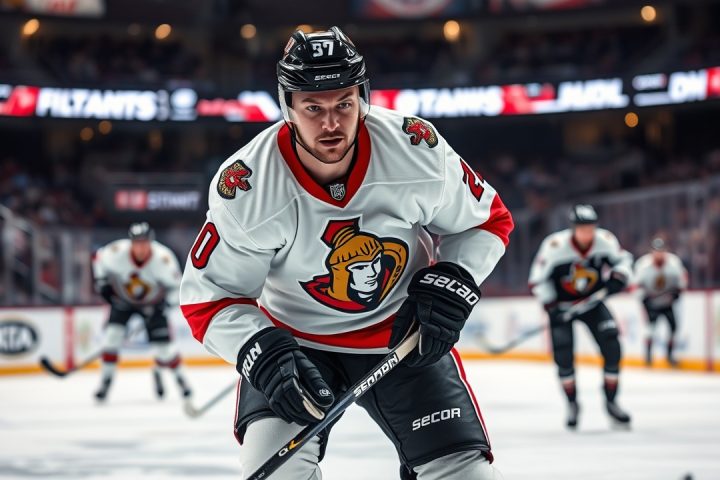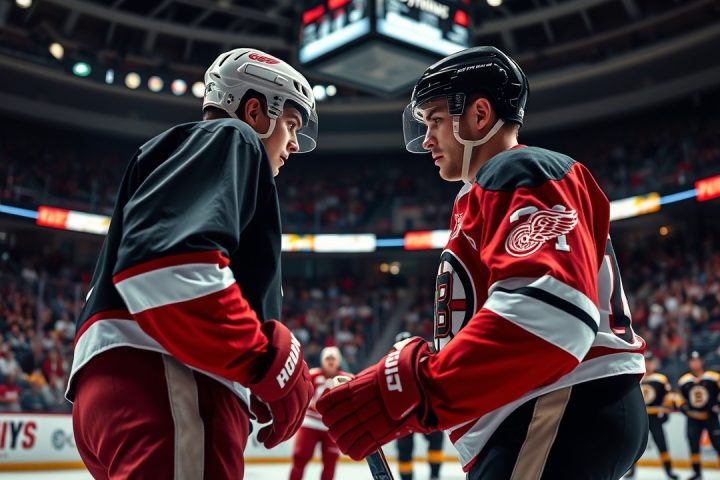NHL Free Agency Overview
As the NHL’s free agency period draws near, teams are bracing for a critical decision-making phase centered around player valuation. With the salary cap on the rise, organizations must navigate a complex landscape to determine the fair market value of potential signings. This exercise is crucial, as it helps avoid the pitfalls of overpaying for players like Steven Stamkos and Chandler Stephenson did last year. Understanding the shifting market dynamics will be paramount this season, as franchises look to maximize their available funds while securing impactful athletes.
Top Free Agents and Their Valuation
Chris Johnston has compiled a list of the top 50 NHL free agents, providing a foundation for evaluating their projected Net Ratings. This metric incorporates how athletes are expected to perform over the length of their contracts, factoring in age-related declines and future cap growth. While not a perfect system, Net Rating can guide discussions on player worth and potential risks involved in long-term commitments.
Key Players to Watch
Among the most notable defensemen entering free agency is Aaron Ekblad. He showcased dominant performance during the 2021-22 season, yet has struggled to maintain that elite status consistently. Though he remains a formidable player, he currently appears to be more of a high-end No. 2 defenseman rather than a premier option. His aging trajectory and comparisons with similar players suggest a ceiling of close to $8 million in annual salary, reflecting the going rate for quality defensemen. It’s important to note that the Florida Panthers, known for their astute scouting and player valuation, may have reservations about extending such a deal, hinting at potential caution regarding his value.
Meanwhile, players like Vladislav Gavrikov and Dante Fabbro also present intriguing options. Gavrikov is expected to demand a salary in the mid-$6 million range but carries some risk, particularly due to questions regarding his peak performance. In contrast, Fabbro’s potential to develop into a top-tier defenseman, reminiscent of MacKenzie Weegar, makes him a compelling prospect. His inconsistency raises questions about his readiness to break out, yet his emergence alongside elite players suggests he could be a valuable investment if given the right environment.
The playoffs also revealed a sharp decline in Dmitry Orlov‘s performance, raising concerns about his longevity and ability to contribute meaningfully at age 34. Although he remains an adept puck mover, the question arises whether he could fetch $5.8 million on a new deal, given recent evidence of decline. Similarly, Ivan Provorov, despite logging significant ice time, faces scrutiny yet may still be worth a look if his performance stabilizes over time.
Additional Candidates and Considerations
Further complicating the situation is aging veteran Brent Burns, who despite solid contributions, must grapple with the question of sustainability in his performance. Comparisons to past greats like Zdeno Chara provide hope, but will he maintain his effectiveness without superior defensive partners?
Other candidates, such as Nate Schmidt, offer a glimpse of value at around $3 million due to the success he’s found in reduced roles. Conversely, players like Matt Grzelcyk, facing potential regression and size limitations, could struggle to find long-term contracts commensurate with their past performances. Finally, unique cases like Ryan Lindgren face uphill battles to prove their worth based on past accolades without recent performance to match.
Conclusion
As the NHL teams prepare for free agency, assessing these players’ potential to deliver impact versus their projected costs will be crucial. The decisions made in the coming weeks will not only shape the rosters for seasons to come but could significantly impact the financial health and competitive balance in the league.




